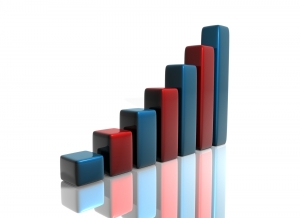
Asia-Pacific Elevator Market by Type (Passenger elevator, Freight elevator and Others), by Technology (Traction and Hydraulic), by Service (New Installation, Maintenance and Modernization), by Capacity (Less than 1500 kg, 1500 to 2500 kg, 2501 to 4000 kg and More than 4000 kg) by Speed (Less than 1 M/S, Between 1 to 4 M/S and More than 5 M/S), by Deck type (Single Deck and Double Deck), by Designation Control (Smart and Conventional), by Door Type (Automatic and Manual) and by Application (Residential, Commercial and Industrial) - Opportunity Analysis and Industry Forecast, 2024 –2030
Industry: Construction & Manufacturing | Publish Date: 30-Mar-2024 | No of Pages: 239 | No. of Tables: 186 | No. of Figures: 151 | Format: PDF | Report Code : N/A
Market Definition
Asia-Pacific Elevator Market size was valued at USD 35.84 billion in 2023, and is predicted to reach USD 65.79 billion by 2030, at a CAGR of 8.0% from 2024 to 2030. The elevator market represents a dynamic sector encompassing the design, manufacturing, installation, and maintenance of elevator systems. From conventional traction elevators to cutting-edge smart solutions, this market offers a diverse array of vertical transportation choices customized to suit the distinct requirements of various buildings and infrastructure projects. Stakeholders within the elevator market include manufacturers, suppliers, contractors, architects, building owners, and facility managers.
Manufacturers continuously innovate to enhance elevator performance, safety, and sustainability, while suppliers provide critical components and materials necessary for system construction. Additionally, sustainability considerations, including energy efficiency and material recyclability, are increasingly integral to elevator design and operation. They align with broader environmental objectives and sustainable building practices. Thus, the elevator market is a cornerstone of vertical mobility as elevators enhance functionality, accessibility, and sustainability within buildings and urban landscapes worldwide.
Rapid Urbanization Increases the Demand for elevators
The swift urbanization across the Asia-Pacific region has played a significant role in the expansion of the elevator industry. As urban areas flourish to accommodate rising populations and address spatial limitations, there is a marked rise in the demand for efficient vertical transit systems such as elevators. Tall buildings, skyscrapers, and mixed-use complexes have become characteristic features of urban landscapes, necessitating the installation of elevators to facilitate movement within these structures.
Furthermore, urbanization has led to denser city populations, resulting in increased pedestrian traffic and a heightened requirement for elevator systems in residential, commercial, and public buildings. elevator systems not only ensure seamless and timely vertical transportation but also align with the growing emphasis on sustainability and energy efficiency accompanying urbanization trends. This has prompted the adoption of modern elevator technologies featuring energy-saving attributes that contribute to environmentally conscious building designs. Consequently, the global trend of urbanization remains a significant driver behind the expansion of the elevator market, compelling manufacturers to innovate and cater to the evolving demands of urban environments.
The Surging Construction Industry Raises the Demand for Elevators
The upsurge in building and construction endeavours stands as a primary driver fuelling the expansion of the elevator market. As urbanization continues to reshape the Asia-Pacific landscapes, the demand for vertical infrastructure such as high-rise buildings, skyscrapers, and mixed-use developments is on the rise. This trend is particularly pronounced in developing economies where rapid urbanization and population growth necessitate inventive solutions for accommodating dense urban populations.
Consequently, the construction industry is witnessing a surge in ambitious architectural ventures that redefine city skylines and urban environments. Within these mounting edifices, elevators assume a crucial role as indispensable channels of vertical mobility. They efficiently ferry occupants and goods between floors, ensuring seamless access to various amenities, residences, offices, and leisure spaces. elevators enhance convenience and optimize space utilization within these tall structures, maximizing the value of vertical real estate.
Moreover, the emergence of mixed-use developments underscores the versatile nature of elevators, seamlessly connecting residential, commercial, and retail spaces within a cohesive complex, thereby enhancing accessibility and functionality. As construction activity escalates to meet the demands of urbanization, elevators emerge as pivotal elements of modern infrastructure, further propelling the growth trajectory of the elevator market.
The Market Growth is Hindered by the Expenses Related to elevator Installations, Maintenance, and Modernization
The significant expenses linked to elevator installations, maintenance, and upgrades serve as notable factors impeding market growth. The initial investment required for installing elevator systems, particularly in buildings not initially designed for such infrastructure, can impose a substantial financial burden on building owners and developers.
Moreover, ongoing costs associated with maintenance contracts, encompassing regular inspections and repairs, contribute to the overall ownership expenses. Additionally, the necessity for modernization to meet updated safety standards and enhance energy efficiency further exacerbates the financial strain. These expenditures can prove particularly daunting for building owners in regions with limited financial resources or older buildings where retrofitting elevators is intricate and expensive. Consequently, the elevated costs associated with elevators curtail market expansion, affecting growth prospects across various regions.
The Implementation of AI-Driven Predictive elevator Maintenance Presents an Opportunity
AI-powered predictive elevator maintenance offers a lucrative opportunity within the elevator industry, utilizing AI to transform maintenance and management practices. Through the analysis of data from elevator sensors, AI algorithms can proactively detect maintenance requirements, reducing downtime and maximizing elevator operational time.
This strategy prolongs the lifespan of elevator components, enhances safety by preventing unforeseen breakdowns, and optimizes resource distribution, leading to substantial cost reductions for elevator companies. Furthermore, reliable and well-maintained elevators contribute to heightened user satisfaction, improving the overall experience for building occupants and visitors alike. Embracing AI-driven predictive maintenance enables elevator companies to remain competitive and provide superior service quality in a rapidly changing market environment.
China Holds the Dominant Market Share in Asia-Pacific elevator Market
China dominates the Asia-Pacific elevator market, holding more than 50% of the market share, valued at USD 19.1 billion in 2023. This dominance is driven by China's significant urban population, large economy, and status as the world's largest manufacturing economy. According to the International Trade Administration, the 14th Five-Year Plan in China highlights the importance of new infrastructure projects focusing on transportation, energy, water systems, and new urbanization. Estimates suggest that the total investment in new infrastructure over the 14th Five-Year Plan period (2021-2025) is projected to reach approximately USD 4.2 trillion.
Moreover, China's formidable nominal GDP of USD 17.963 trillion in 2022 further underscores its significance in driving the elevator market. With such a robust economic foundation, China is well-positioned to sustain and propel the demand for elevators, as economic growth often correlates with increased construction activities and urban development projects.
Additionally, the country's ongoing focus on urbanization and infrastructure development presents ample opportunities for elevator manufacturers and suppliers to capitalize on the growing market demand. As China continues to invest in modernizing its cities and improving living standards, the elevator market is expected to remain a key beneficiary of these initiatives. These aforementioned factors contribute to the country’s sustained growth and expansion in the foreseeable future.
India to Witness Substantial Growth in the Asia-Pacific elevator Market
India is the second-largest elevator market in the region, following China, with a market value of USD 6.2 billion in 2023. According to projections by United Nations, India's population is anticipated to reach 1.64 billion by 2047, with approximately 51% residing in urban areas. This demographic trend significantly amplifies the demand for elevators in India, as urbanization drives the need for vertical transportation solutions to enable efficient mobility within densely populated urban centers.
Furthermore, the presence of prominent elevator companies in India, including KONE elevator India, a subsidiary of KONE Corporation, and Fujitec India, a subsidiary of Fujitec Co., Ltd., underscores the country's significance in the global elevator market. These companies have made substantial investments and advancements in India. They launched innovative elevator solutions and expanded production capacity to meet the surging demand. Their presence highlights India's position as a key market for elevator manufacturers, contributing to the country's status as the second-largest elevator market in the region.
Notably, in May 2022, KONE elevator India, a subsidiary of KONE Corporation, made significant strides in the market by unveiling the world's largest passenger elevator at the Jio World Centre in India. This elevator, weighing 16 tons and spanning an impressive floor area of 25.78 square meters, features five stops. This elevator showcases KONE's commitment to innovation and meeting the growing demand for elevators in India's urban landscape.
Furthermore, in August 2023, Fujitec India, a FUJITEC CO., LTD. subsidiary, inaugurated a new elevator plant in India to bolster unit production in response to the escalating demand. This expansion aligns with Fujitec's strategic plan to elevate annual production from 2,000 units to 3,000 units by 2023. It reflects the company's dedication to meeting the evolving needs of the Indian elevator market and sustaining its growth momentum.
Competitive Landscape
The Asia-Pacific elevator market comprises various market players, such as Schindler, Otis Elevator Company, TK Elevator (TKE), Kone Corporation, Hitachi Ltd., Fujitec Co., Ltd, Hyundai elevator Co., Ltd, Mitsubishi Electric Corporation, Toshiba elevator and Building Systems Corporation, Winone elevator Company Limited and others.
Asia-Pacific Elevator Market Key Segments
By Type
-
Passenger elevator
-
Freight elevator
-
Others
By Technology
-
Traction
-
Machine Room [MR] Traction
-
Machine Roomless [MRL] Traction
-
-
Hydraulic
By Service
-
New Installation
-
Maintenance
-
Modernization
By Capacity
-
Less than 1500 kg
-
1500 to 2500 kg
-
2501 to 4000 kg
-
More than 4000 kg
By Speed
-
Less than 1 M/S
-
Between 1 to 4 M/S
-
More than 5 M/S
By Deck Type
-
Single Deck
-
Double Deck
By Designation Control
-
Smart
-
Conventional
By Door Type
-
Automatic
-
Manual
By Application
-
Residential
-
Commercial
-
Industrial
By Country
-
China
-
Japan
-
India
-
South Korea
-
Australia
-
Indonesia
-
Singapore
-
Taiwan
-
Thailand
-
Rest of Asia-Pacific
REPORT SCOPE AND SEGMENTATION:
|
Parameters |
Details |
|
Market Size in 2023 |
USD 35.84 Billion |
|
Revenue Forecast in 2030 |
USD 65.79 Billion |
|
Growth Rate |
CAGR of 8.0 % from 2024 to 2030 |
|
Analysis Period |
2023–2030 |
|
Base Year Considered |
2023 |
|
Forecast Period |
2024–2030 |
|
Market Size Estimation |
Billion (USD) |
|
Growth Factors |
|
|
Countries Covered |
10 |
|
Companies Profiled |
10 |
|
Market Share |
Available for 10 companies |
|
Customization Scope |
Free customization (equivalent up to 80 working hours of analysts) after purchase. Addition or alteration to country, regional, and segment scope. |
|
Pricing and Purchase Options |
Avail customized purchase options to meet your exact research needs. |
KEY PLAYERS
-
Schindler
-
Otis Elevator Company
-
TK Elevator (TKE)
-
Kone Corporation
-
Hitachi Ltd.
-
Fujitec Co., Ltd
-
Hyundai Elevator Co., Ltd
-
Mitsubishi Electric Corporation
-
Toshiba Elevator and Building Systems Corporation
-
Winone Elevator Company Limited




 Speak to Our Analyst
Speak to Our Analyst


































